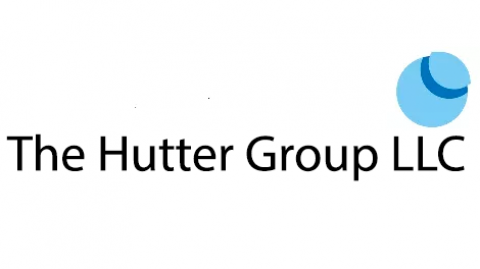 I recently had to give bad news to a new client, the CEO of a successful global electronic hardware company. This CEO hired me earlier this year to help ensure that his company's upcoming innovations, which were the product of a several year turnaround program, were protected from competitive knock-offs. I have completed a couple of projects for the company to date, and he now wanted to discuss IP protection for a new product for the European market that would serve as a platform for later product spin-offs both there and in the US. This new product incorporated a number of highly innovative features and almost certainly could generate broad patent protection. Unfortunately, however, I had to inform my client that his company's important innovation could not be patented in Europe because the product launch date occurred several months ago.
While
I recently had to give bad news to a new client, the CEO of a successful global electronic hardware company. This CEO hired me earlier this year to help ensure that his company's upcoming innovations, which were the product of a several year turnaround program, were protected from competitive knock-offs. I have completed a couple of projects for the company to date, and he now wanted to discuss IP protection for a new product for the European market that would serve as a platform for later product spin-offs both there and in the US. This new product incorporated a number of highly innovative features and almost certainly could generate broad patent protection. Unfortunately, however, I had to inform my client that his company's important innovation could not be patented in Europe because the product launch date occurred several months ago.
While
Companies Create Risk by Leaving IP Strategy Out of Innovation
Failure to Generate REAL Patent Protection: Keurig’s Story (Part 1)
 Innovators--be they individuals or corporations--frequently view patent protection as the key to capturing value from the time and money invested in creating a successful product. Indeed, conventional wisdom dictates that a patent covering a true innovation will make it difficult, if not virtually impossible, for a competitor to legally provide a knock-off product to the same customer. Time and again, however, a successful product introduction will be followed by appearance in the market of a substitute product that provides the same consumer benefit but that also does not infringe the innovator's patent rights. In such a case, the innovator is not only faced with competition, it must now play in an increasingly price-eroded market, where such price erosion is likely more painful for the innovator because it made an investment that the knock-off company did not make.
A familiar example of a product where the
Innovators--be they individuals or corporations--frequently view patent protection as the key to capturing value from the time and money invested in creating a successful product. Indeed, conventional wisdom dictates that a patent covering a true innovation will make it difficult, if not virtually impossible, for a competitor to legally provide a knock-off product to the same customer. Time and again, however, a successful product introduction will be followed by appearance in the market of a substitute product that provides the same consumer benefit but that also does not infringe the innovator's patent rights. In such a case, the innovator is not only faced with competition, it must now play in an increasingly price-eroded market, where such price erosion is likely more painful for the innovator because it made an investment that the knock-off company did not make.
A familiar example of a product where the
How Startup Patent Filing is Different
 The prevailing view of patent experts who advise innovators--be they individuals or companies--it that patent filings should occur as early as possible. This advice, which is even more prevalent now that the US has moved to a "first to file" system, exacerbates the significant problem of worthless patents that I have written about previously. To summarize, by "worthless," I mean that the innovator's patents will not cover anything that consumers desire to buy. Logic thus dictates that patents will be irrelevant to the startup, as well as expensive wastes of time, unless protection aligns with a validated customer demand for the innovator's product or technology.
This is where a key difference falls out between the patent filing strategies for established companies and startups where each is developing innovative products or technology. The former already have products in the market and customers that
The prevailing view of patent experts who advise innovators--be they individuals or companies--it that patent filings should occur as early as possible. This advice, which is even more prevalent now that the US has moved to a "first to file" system, exacerbates the significant problem of worthless patents that I have written about previously. To summarize, by "worthless," I mean that the innovator's patents will not cover anything that consumers desire to buy. Logic thus dictates that patents will be irrelevant to the startup, as well as expensive wastes of time, unless protection aligns with a validated customer demand for the innovator's product or technology.
This is where a key difference falls out between the patent filing strategies for established companies and startups where each is developing innovative products or technology. The former already have products in the market and customers that
Strategic Patenting: How To Get it Right (Guest Post)
 This article, by Francis Hagel, first appeared in Intellectual Property Magazine. It provides strong guidance, in checklist form, for those seeking to beat the odds that the patents they obtain will actually generate strategic value. Mr. Hagel is an IP strategy advisor from France. The article is reproduced with permission.
"Suggestions for strategic drafting of patent applications"
In the drafting of a patent application, a practitioner starts from a blank page[i]. He/she enjoys the greatest freedom for shaping its content on the basis of the information at hand concerning the invention, its context and the prior art of interest, within the constraints set forth by patent law in the country of filing, keeping in mind the specifics of patent law in the major markets for the invention. This freedom applies to all parts of the application : definition of the
This article, by Francis Hagel, first appeared in Intellectual Property Magazine. It provides strong guidance, in checklist form, for those seeking to beat the odds that the patents they obtain will actually generate strategic value. Mr. Hagel is an IP strategy advisor from France. The article is reproduced with permission.
"Suggestions for strategic drafting of patent applications"
In the drafting of a patent application, a practitioner starts from a blank page[i]. He/she enjoys the greatest freedom for shaping its content on the basis of the information at hand concerning the invention, its context and the prior art of interest, within the constraints set forth by patent law in the country of filing, keeping in mind the specifics of patent law in the major markets for the invention. This freedom applies to all parts of the application : definition of the
Strategic Patenting Part 3: Why (Almost) Every Innovator Fails to Maximize Patent Value
The Take Away: Those seeking to generate market-making patent coverage for new innovations must recognize that patent coverage should focus not on how the problem is solved but instead on the benefits provided to the customer. Most patent coverage is directed to a specific solution to a customer need that is characterized in the form of an invention. Patents that cover only one solution to a broad customer need will permit competitors to solve the same customer need with a non-infringing substitute product, thus leaving the patent holder with no legal recourse against their competitor. On the other hand, market-making patent coverage focuses on the benefits provided to the customer, which means that competitors cannot sell the same benefit. Accordingly, patent coverage that emphasizes benefits over features will make it more difficult for competitors to provide the same solution to the customer. Innovators must
Strategic Patenting Part 2: It’s Not Your Patent Attorney’s Job to Get it Right
 From the last post, we see that it is very rare for patents to create value for their owners. Moreover, if the "big guys" with pockets deep enough to hire the best lawyers can get it right only 5% of the time, there should be no doubt that smaller companies and individuals should re-examine the advice they are getting from their IP counsel. This is not to say that smaller companies and individuals cannot be successful in creating market-defining patent protection. To the contrary, it is my strong belief that small companies can create solid patent protection at a reasonable cost, but to do so will likely require patentees to recognize that their IP counsel likely has no clue how to do what you need done. And, even if she does, it is not her job to make
From the last post, we see that it is very rare for patents to create value for their owners. Moreover, if the "big guys" with pockets deep enough to hire the best lawyers can get it right only 5% of the time, there should be no doubt that smaller companies and individuals should re-examine the advice they are getting from their IP counsel. This is not to say that smaller companies and individuals cannot be successful in creating market-defining patent protection. To the contrary, it is my strong belief that small companies can create solid patent protection at a reasonable cost, but to do so will likely require patentees to recognize that their IP counsel likely has no clue how to do what you need done. And, even if she does, it is not her job to make
Strategic Patenting Part 1: Why So Few Patents Create Real Value
 Many business people are surprised to find out that all patents are not created equal. A recent study of Fortune 500 companies reported in Suzanne Harrison's Edison in the Boardroom Revisited indicates that only a very small number of patents--namely, 5%-- obtained by these top patent filers created strategic value for their owners. If only 5% of the most sophisticated companies, all of which have veritable armies of patent professionals on their teams, can get patent protection right, it must follow that less resource-rich companies have an even lower probability of gaining strategically valuable patent protection. This and the next few blog posts will aim to help improve the odds for business people seeking to learn how to generate more valuable patents.
The first issue to clear up is what "strategic patenting" means. Those of us in the IP Strategy business define a "strategic patent"
Many business people are surprised to find out that all patents are not created equal. A recent study of Fortune 500 companies reported in Suzanne Harrison's Edison in the Boardroom Revisited indicates that only a very small number of patents--namely, 5%-- obtained by these top patent filers created strategic value for their owners. If only 5% of the most sophisticated companies, all of which have veritable armies of patent professionals on their teams, can get patent protection right, it must follow that less resource-rich companies have an even lower probability of gaining strategically valuable patent protection. This and the next few blog posts will aim to help improve the odds for business people seeking to learn how to generate more valuable patents.
The first issue to clear up is what "strategic patenting" means. Those of us in the IP Strategy business define a "strategic patent"
Why the IP Law Firm Business Model is Broken And What I Am Doing About It
As a former IP law firm shareholder and senior corporate lawyer, I know all too well the expense required to start and maintain an IP law practice. Not only are IP lawyers of all levels of experience paid handsomely, but so are the highly skilled paralegals, docket clerks and administrative professionals traditionally required create the infrastructure needed to handle the myriad of details involved in an IP law practice. Of course, this expensive infrastructure must be sustaining, so while a lawyer serves today’s clients, her eye must also be on finding the next client because payroll and rent obligations don’t take a holiday when clients do. This "feed the beast" nature of the IP law practice model was a primary reason that I decided several years ago that I would not again work in the traditional practice of law. How could I? The standard legal service framework required me to build
Do Patents Matter? Lean Startups Should Ignore Expert Advice and Let Their Data Drive Patenting Decisions
 Many hold strong opinions on the value of patents to business. Both in person and online, there are any number of "experts" who stridently insist that without patent protection, a company's business goals are doomed. With about 350,000 new patent applications filed in 2012, there is no question that many agree that patents create, and are even critical to, business value. But, as the 2012 US presidential election cycle demonstrated, actual data can illuminate how expensive experts are often flat out wrong. So where's the "real data" that will allow business people to know whether a patent is the right decision for their company? This information is likely even more critical for startup entrepreneurs, most of whom have no choice but to rely on self-interested expert opinion regarding the value of patents to their business.
Entrepreneurs who follow
Many hold strong opinions on the value of patents to business. Both in person and online, there are any number of "experts" who stridently insist that without patent protection, a company's business goals are doomed. With about 350,000 new patent applications filed in 2012, there is no question that many agree that patents create, and are even critical to, business value. But, as the 2012 US presidential election cycle demonstrated, actual data can illuminate how expensive experts are often flat out wrong. So where's the "real data" that will allow business people to know whether a patent is the right decision for their company? This information is likely even more critical for startup entrepreneurs, most of whom have no choice but to rely on self-interested expert opinion regarding the value of patents to their business.
Entrepreneurs who follow
Lean Startup Methodology: How Patenting Decisions Fit into this New Business Framework
One of the first questions start up entrepreneurs usually ask sounds something like this: “Is it worth the effort and expense to get a patent on this business idea?” In countless conversations with clients in my years as a patent attorney, I could usually articulate multiple reasons why the person seeking to to start a new business venture unequivocally needed to file a patent application as soon as possible. Moreover, I could recite a litany of ills that could follow from failing to follow my advice. Following this conversation, I could typically expect a fat check from the client, whereupon I would dutifully draft strong patent on the subject invention. It was a nice living. These days, I work as a startup technology company CEO and look at patents much differently than I did in the past: as a consumer of patent services myself, I now examine patenting issues from


